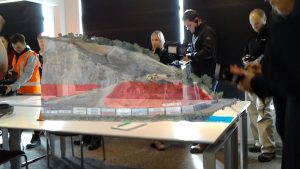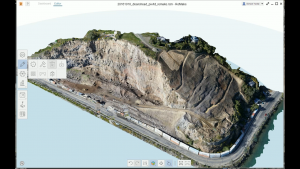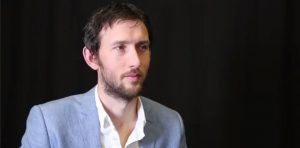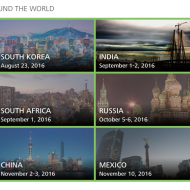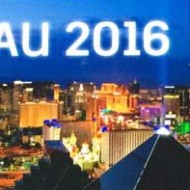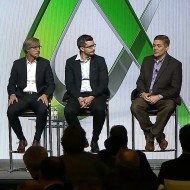Curious about the future of UAVs in AEC? Look no further than Simon Yorke’s class from AU 2016. An advanced design technologist for Aurecon, a global engineering firm, Yorke illustrated his innovative recipe of UAVs, photogrammetry, AR, VR, ReCap, ReMake, 3dsMax, Dynamo, and Stingray using the case study of the earthquake-damaged Deans Head site in New Zealand. His groundbreaking approach not only saved considerable time and money, but also improved safety.
Here we catch up with Yorke and quiz him on his maverick tendencies.
What were your engineering milestones of the past?
So far my career has allowed me the opportunity to work on some amazing and varied projects that span Aurecon’s global reach. Some of the standouts have been working to adapt artificial intelligence software that was created for the movie industry to use for simulating the movement of vehicles and pedestrians for predictive analysis of designs.
From that work we developed an urban comfort tool that could be used for identifying outdoor environments that could potentially cause discomfort and therefore predict loss of pedestrian footfall at the early design stage. This capability allowed Architects and developers to optimize their concepts for human centered design.
This focus on designing for a better outcome for the end user, while also watching the frustration of non-technical experts trying to decipher architectural or engineering drawings, led me to explore the use of a combination of tools to improve the story telling experience of conveying design information. I saw game engines as the tool that could take design documentation from a static medium and bring them to life as an engaging experience. So why not also use them to close the design process loop by becoming the tool for empowering anybody to make changes in an environment they could understand.
What role will AR, VR, UAVs and mixed reality play in the future of AEC?
From safety, to accuracy, to time and cost savings, we’re seeing so many examples of these tools changing how we work in the AEC industry. Reality capture through to storytelling, these tools are empowering not only the AEC professionals, but all stakeholders to truly understand and visualize designs, from the initial design phase through construction and on to the operational life of the site or product. It won’t be long until we can immerse ourselves in the design environment virtually, to not just use VR as a viewer, but actually make changes or create entire projects from scratch in VR. The same goes for augmented reality, where we will be able to design on top the real world. We are already testing these workflows at Aurecon and it’s an exciting time to be involved in the evolution of the technology.
What do other engineers need to know or do in order to move this forward?
Most importantly not to be afraid of change. My motivation to explore outside of our industry for emergent technology that could change how we design came from constantly hearing that people were content with their current process, simply because “that’s the way we’ve always done it”.
If those who we trust to shape the world get stuck doing things the same way, then we can’t create a better world.
How have your AU experiences impacted your work? What have you gained through them?
With the power of digital collaboration through online communication tools, such as Skype, Slack, or Twitter, and online learning tools like YouTube or AU Online, we now have the ability to access people and information without leaving home. However meeting people in person at an event like AU is a powerful experience that can’t be replaced in digital form.
The connections and relationships that events like this create can lead to ideas and collaborations that can change the world.
I now have good friends in all corners of the globe that I develop ideas with, ranging from computational designers and software developers, to roboticists and master craftspeople, all made possible by attending Autodesk University.
What advice would you give tomorrow’s engineers?
Be prepared for an industry that looks and operates nothing like today’s workplace.
Push your learning institutions to evolve their curriculum, and seek out opportunities to learn from different industries that will complement the future of how we capture, design and make. The earlier that a design professional can realize that everything around them was thought up for the first time by people just like them, the faster they can remove the barriers to think outside of the box and start designing innovative solutions to improve our world. – Oh, and one more thing, learn to code! It’s becoming an essential part of a design professionals toolkit.
Read more about the Deans Head project on the Autodesk ReMake blog.

